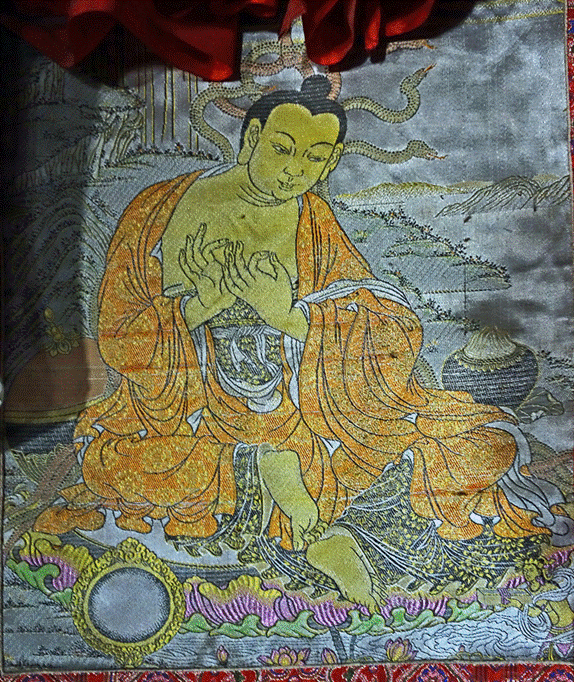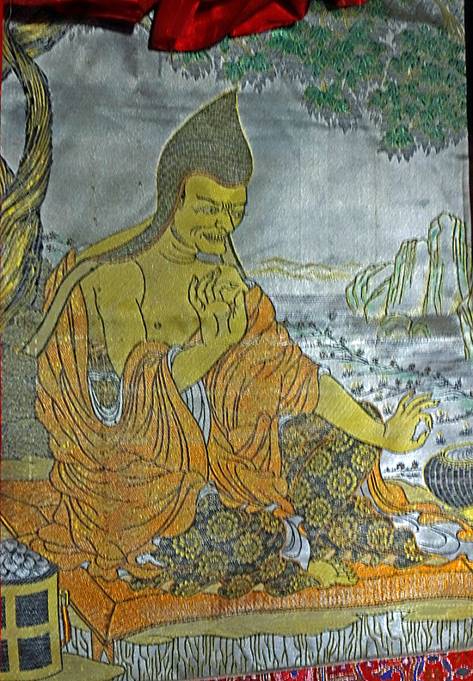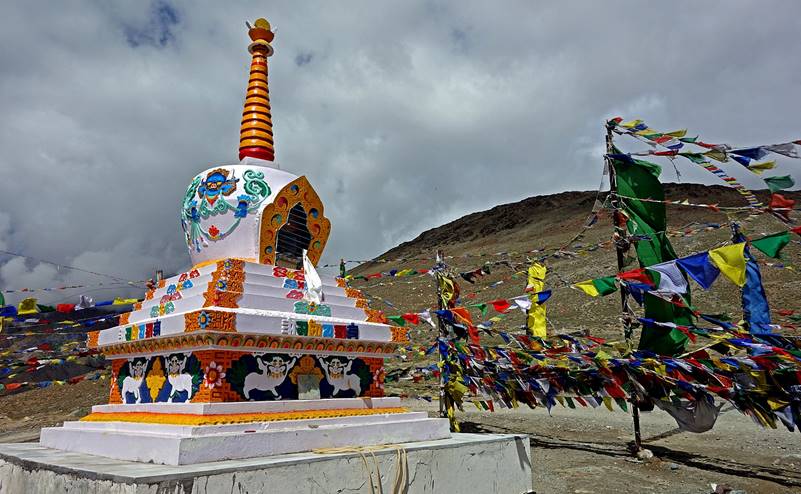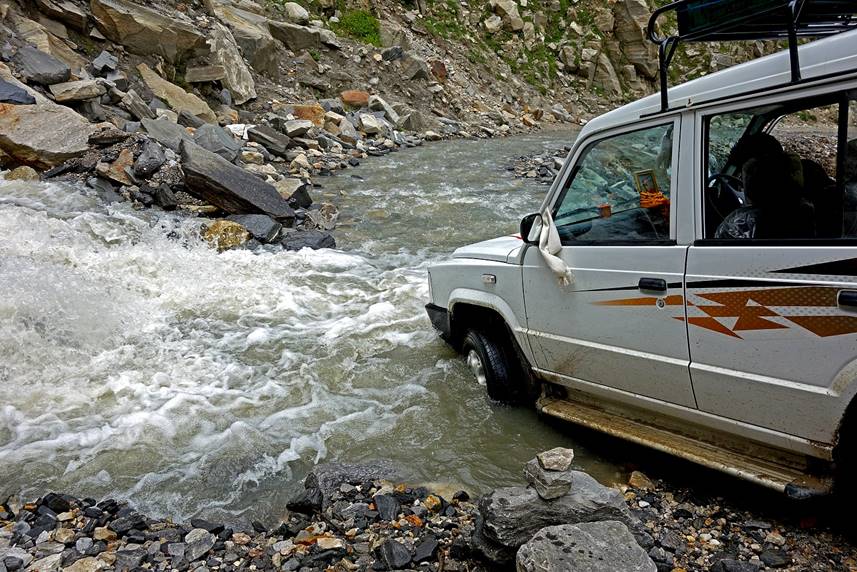India (July-August 2016): Brandy Nala (Ladakh) to Kibber (Spiti)
Before and after trekking: Palace, gompas,
and temple in Ladakh, Spiti,
and Manali
![]()
Return
to main India-2016 webpage
Prior to this 2016 trek I spent a few
acclimatization days in Leh (3500m). I used that time
to visit the summer palace of the Ladakh‛s
royal family in Stok and several Buddhist gompas (Matho, Hemis, Chemre,
and Takthok). After the trek, before returning to
Delhi, I visited other Buddhist gompas in Spiti valley (Kye, Dhankar, and Tabo), as well as
the Hindu Hadimba Devi temple in Manali.
Click here
to see photos of Leh and the area around it that I
took during a previous trip in 2013.
Landing at Leh
airport in the early morning.

Spituk gompa (situated 8km
southwest of central Leh):

Stok Palace (situated 10km south of Leh):
Views of the palace.



Paintings in the chorten at the entrance of the palace.

Inside the prayer
room of the palace.
|
|
|
|
View over the Indus
valley and Leh from the palace.

Mani stones and chortens near the palace.

Views of the golden
Buddha statue south of the palace.


Matho gompa (18km
south-east of Leh):
Views of the gompa.


Inside the modern
prayer room.

Left: entrance of the
old prayer room. Right and below: inside the old prayer room.
|
|
|
|
|
|
Chemre gompa (30km
south-east of Leh in the valley of the Chemre Chu river).
|
|
|
Takthok gompa (located in
the Sakti village 6kms north-east of Chemre gompa):
The oldest part of
the gompa has been built in a pre-existing cave in a
rock cliff. The name ″takthok″ literally
means ″rock-roof″.

Paintings at the
entrance of the old prayer room.
|
|
|
Inside the cave
forming the old prayer room (with banknotes stuck to the rock ceiling).
|
|
|
|
|
|
Monks and statues in
a more recent prayer room.
|
|
|
|
|
|
Long
mural in the courtyard outside the prayer rooms (this image is an imperfect
collage of five photos).

Hemis gompa located some 40km south of Leh, at the
end of a small valley 8km uphill west of the Leh-to-Manali road:
Hemis
gompa is an important Buddhist monastery of the
Drukpa lineage established in 1672 (although a monastery is said to have
existed here much earlier). I visited this monastery during the festival of
July 14-15, 2016, which celebrates the birth anniversary of Lord Padmasambhava (a.k.a. Guru Rinpoche), an 8th-century Buddhist
master believed to have been born on the 10th day of the 5th month of the
Tibetan Monkey year. The annual festival is therefore particularly busy on each
Monkey year, which only comes once in a cycle of 12 years. July 14-15, 2016,
happened to be during a Monkey year. During two days colorful dances and sacred
plays are performed by monks in the large central courtyard of the monastery.
Unfortunately, the festival has become a major touristic attraction. Most of
the space around the courtyard, especially the balconies and the terraces on
the roof that offer the best unobstructed views, had been reserved for
dignitaries, monks, and more prominently pre-paid tourist groups (as tourist
organizations make the reservations long before they actually get their
clients). With the rest of the attendance, mostly Ladakhi
people, I was uncomfortably squeezed in the sun in a small area near the
entrance of the courtyard, with only partial views over the central stage. In
fact, just reaching this area had been quite an ordeal.



|
|
|
|
|
|
Key gompa located mid-way between the village/town of Kibber and Kaza, in the Spiti district of Himachal Pradesh:
Views
of the gompa.


Left: inside the new
prayer hall, inaugurated by the 14th Dalai Lama in 2000. Right: effigy of the
Dalai Lama in the prayer hall (also visible on the right-hand side of the other
photo)
|
|
|
Main kitchen of the gompa, with its traditional wood fired ovens.
|
|
|
Skulls mounted below tridents on poles with long tufts of threads
(Tantric symbols of Buddhism) on the roof of the gompa.
|
|
|
|
Valley
of the Spiti river seen from
Key gompa.


Dhankar gompa, 20km south-east of Kaza along the Spiti river:
Approaching
the gompa from Kaza. The gompa, partially visible on the ridge on the left of the
photo, dominates the Spiti river
on the right.

View of the gompa from the other side. The yellow building on the right
is the new gompa.

The
old Dhankar gompa.

|
|
|
Paintings in the old gompa.
|
|
|
|
Tabo gompa, 28km east of Dhankar
gompa in the Spiti valley:
Founded in 996CE this Buddhist monastery
is said to be the oldest continuously operating gompa
in the Himalayas. Built like a fort with very thick adobe brick walls, it looks
on the outside very different from other gompas in
northwest India and not very impressive. But the inside is quite extraordinary
with old mural paintings, thankas, manuscripts,
statues, and wooden columns. Unfortunately, visitors are not allowed to take
pictures.

Along the road between Kaza and Manali:
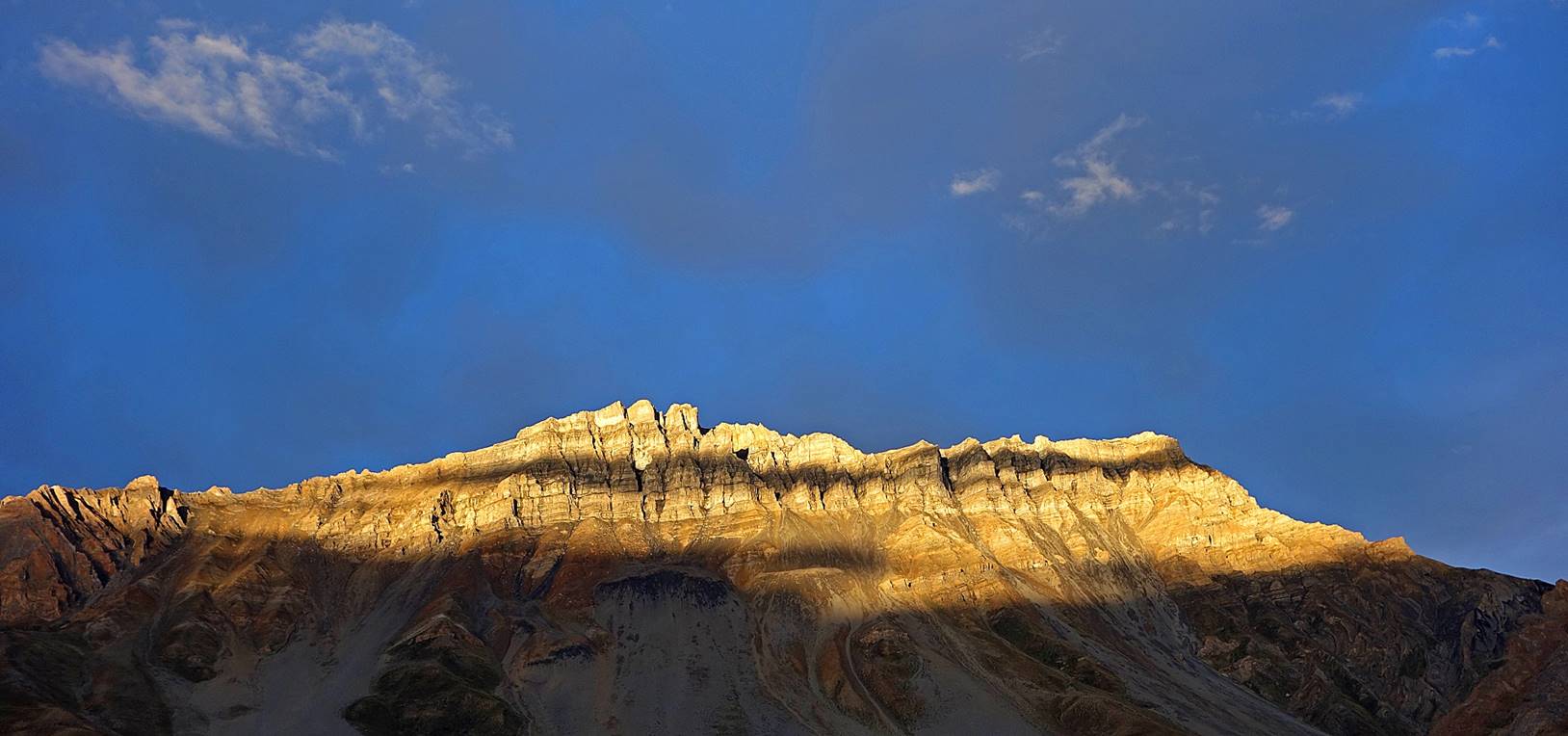
Chortens at Kunzum pass.
|
|
|
One
of a number of river crossings along the road.
|
|
|
|
Hadimba Devi temple in Manali:
The pagoda-shaped temple (three square
roofs topped by a brass cone) first built in 1553 is dedicated to Hidimbi Devi, wife of Bhima,
a figure in the Indian epic Mahābhārata.
It is located in a beautiful cedar forest 2km from Manali
center.
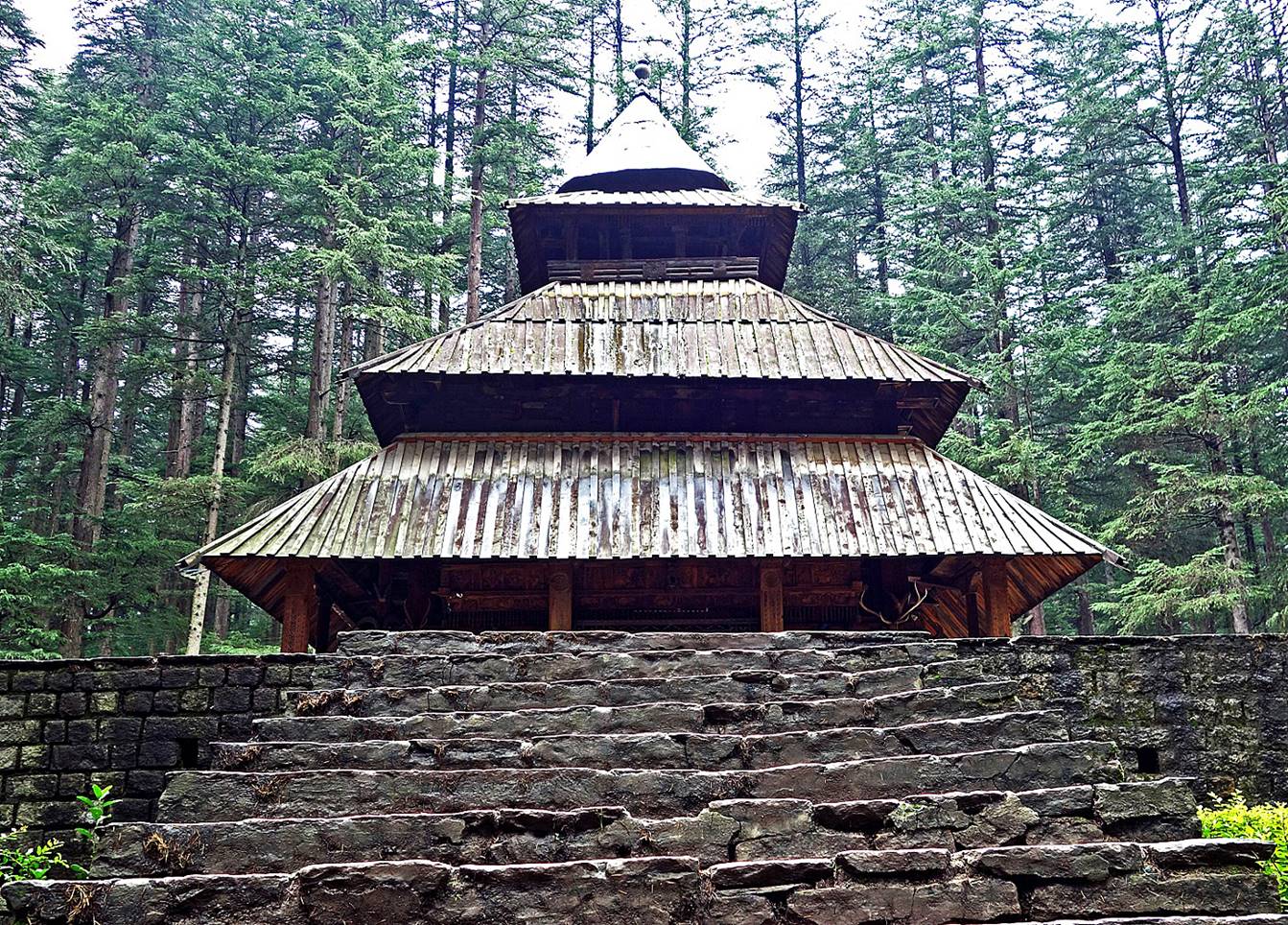

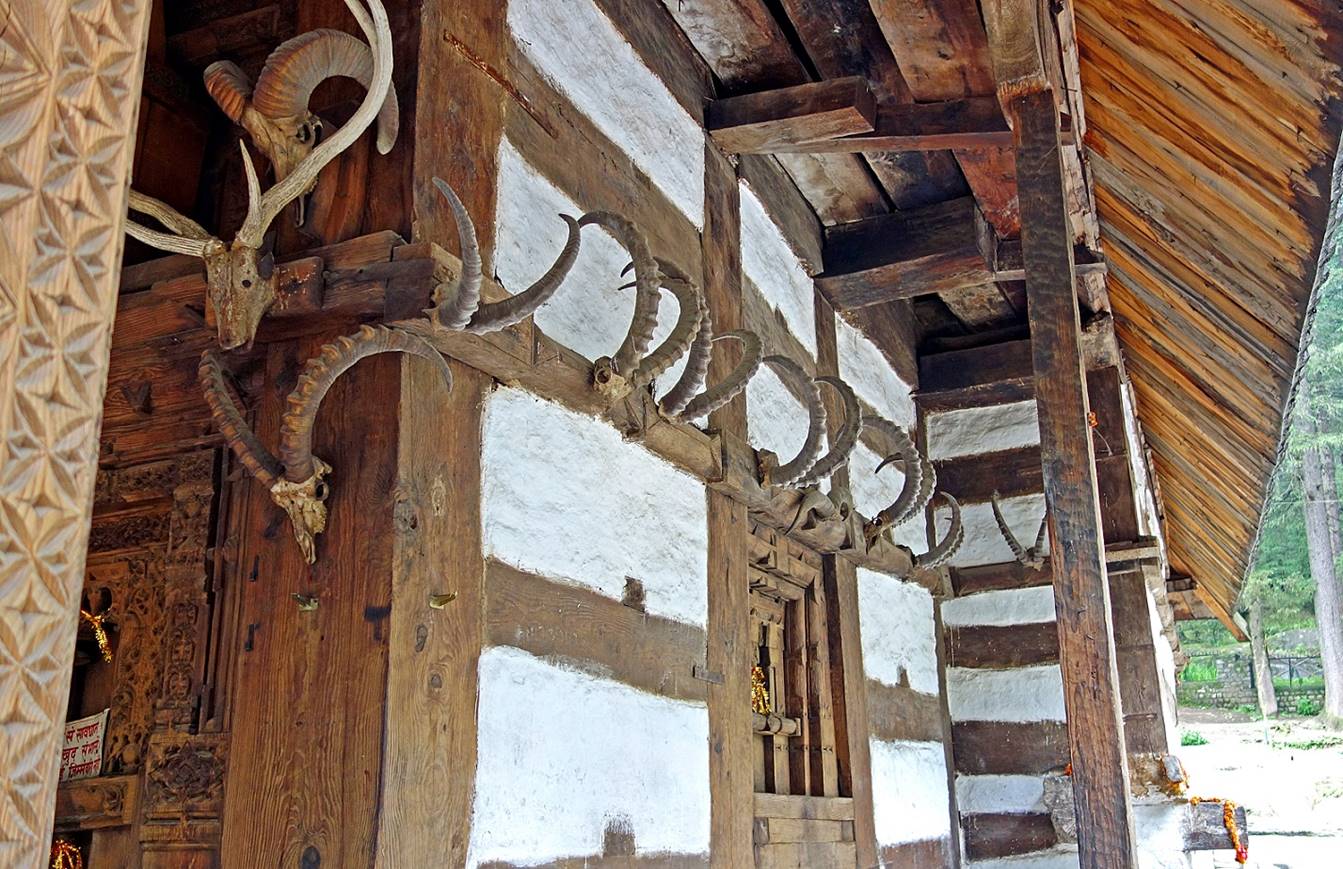
The
beautifully carved wooden entrance of the temple.

![]()
































